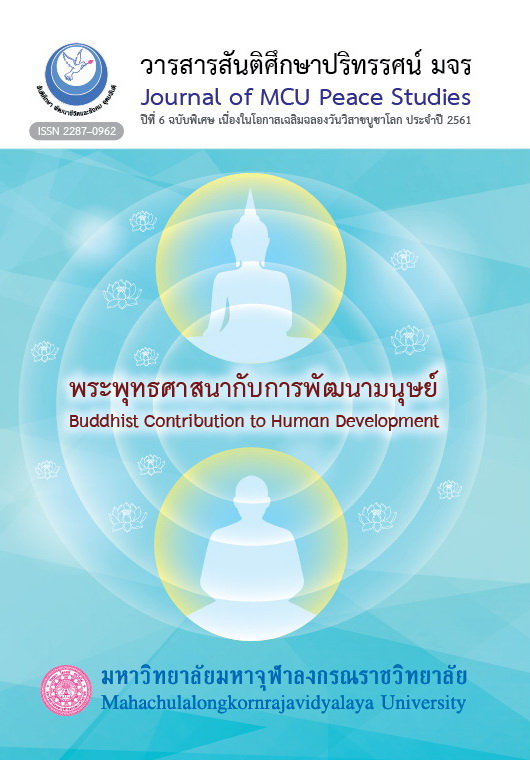Mahatma Gandhi’s Peacebuilding According to Buddhist Peaceful Means
Main Article Content
บทคัดย่อ
This thesis aimed to 1) study the way of Mahatma Gandhi’s Peace building, 2) to
study the way of peace building according to Buddhism, and 3) to analyze Mahatma
Gandhi’s peace building according to Buddhist peaceful means.
From the research, it is found the followings:
1. The way of Mahatma Gandhi’s peace building is influential by the social
refinement among various religions. The use of Ahimsa, the Non-violence, as political
fighting means is the ethical system of India, and the emphasizing the power of love and
virtue is for solving political problems; political leaders have to yield such objectives.
Gandhi emphasized the Dhamma for everyone in the society; in politics he successfully
applied ‘Ahimsa’. Satyagraha is not the use of violence; it is both the administrative
principle and the distinguish political-fighting process of Mahatma Gandhi of which was the
fighting between the good and the evil. Satyagraha is based on the 2 principles: 1) The
truth and the trust in truth, and 2) The continual and consistent actuation.
2. The way of peacebuilding according to Buddhism by Bala consists of 1) Saddha
Bala: the energy of controlling confidence, 2) Viriya Bala: the energy of effort controlling
laziness, 3) Sati Bala: Mindfulness: the energy of controlling carelessness, un-attention,
absent mind and the lack of mindfulness, 4) Samadhi Bala: Concentration: the controlling
of attentiveness, and 5) Panna: Wisdom: the energy of controlling neglecting and false
belief.
3) In analyzing Mahatma Gandhi’s peacebuilding according to Buddhist peaceful
means, it is found that the peace the Mahatma Gandhi built was with the avoidance of
performing violence by applying Ahimsa and Satyagraha that love among fellowmen must
be concerned despite some of them might be enemies. The handling of non-violence is of
the application of belief, hard effort, concentration, mindfulness and wisdom.
Article Details
ทัศนะและความคิดเห็นที่ปรากฏในบทความในวารสาร ถือเป็นความรับผิดชอบของผู้เขียนบทความนั้น และไม่ถือเป็นทัศนะและความรับผิดชอบของกองบรรณาธิการ ยินยอมว่าบทความเป็นลิขสิทธิ์ของวารสาร


